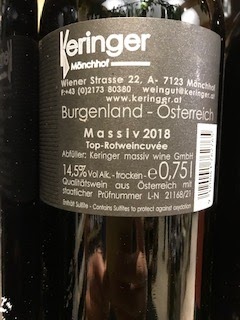 |
| Friedrich (Fritz) Zweigelt |
The story of Fritz Zweigelt goes something like this. Before the war he engaged in an intensive programme of grape breeding in the Klosterneuburg school of viticulture which he headed.
His most famous crossing which was to become the grape named after him was made in 1921 (St. Laurent and Blaufrankisch). In 1923, there followed another - Blauburger (Blauer Portugieser x Blaufrankisch).
There were others including Goldburger (1922) which is Welschriesling x Orangetraube to which we will return shortly.
A convinced Nazi, he ran the institute on doctrinaire lines getting rid of colleagues he deemed politically unreliable.
A great deal of plant material was lost at the end of the war and Zweigelt himself was dismissed in 1945. He was judged to be a 'Lesser offender' and although pardoned in 1948 never returned to public office.
 |
| Lenz Moser |
His work was carried on by the institute with the help of the famous grape breeder, Lenz Moser who propagated the many hundreds of crossings that could still be found even after the devastation in the immediate post war period. An incredible number of micro-vinifications were made but only very few (27 whites and 8 reds) were deemed to be of any interest.
In the terrible frost of 1956 which affected the entire continent of Europe, amazingly Zweigelt's 1921 St. Laurent x Blaufrankisch) cross survived, resisting the cold where others had not.
This resulted in the variety being singled out and produced in quantity, eventually being named 'Zweigelt.' It is now the most planted Austrian red variety. There are moves to change the name since Zweigelt's past has become better known but this seems unlikely.
We mentioned another Zweigelt crossing, Goldburger above. This has had infinitely less success than the red Zweigelt but we determined to find a bottle. Klosterneuburg has also produced a red variety more recently (1970) called Rathay. This is a complex crossing of something called Klosterneuburg 1189-9-77 (= Seyve Villard 18-402 and Blaufrankisch) x Blauburger. It is resistant to various mildews and is recognised as a PIWI variety. We determined to obtain an example of this too.
 |
| Massiv wine, massiv price. |
Our journey began with this bottle found in an Austrian supermerket in March 2022, 'Massiv' was the name. Why 'Massive?' because the blend included something called Rathay we were told, and Rathay is a variety so tannic and assertive that it couldn't be used by itself so they said.
By our nect visit to Austria in mid-June 2022 we had tracked down bottles of both Goldburger and Rathay as monovarietals. The Rathay was available from a wine shop in Vienna itself and but the Goldburger necessitated a trip to the far flung suburb of Rodaun.
Rathay is named after Emmerich Ráthay (1845 - 1900) who was a former director of Klosterneuburg. It was obtained by Dr. Gertrude Mayer and was first licensed in 2000.
The Distl operation is a pleasantly old-fashioned and rustic one. The unpretentious buildings and equipment were somehow appropriate for the production of this rarest of varieties.
We're looking forward to tasting these two interesting Klosterneuburg varieties and will report on them in due course.
 |
| Klosterneuburg Research Centre and School of Viticulture and Pomology. |









No comments:
Post a Comment